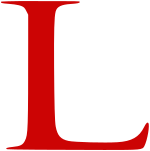

Silver Legion of America | |
|---|---|
 | |
| Other name | Silver Shirts |
| Leader | William Dudley Pelley[1] |
| Founded | January 31, 1933 (1933-01-31)[2] |
| Dissolved | 1941 |
| Headquarters | Asheville, North Carolina[3] |
| Publications | • Liberation • Pelley's Silvershirt Weekly • The Galilean • The New Liberator |
| Political wing | Christian Party[4][5] |
| Membership | 15,000 (c. 1934)[6][7] 100,000 (claimed)[8] |
| Ideology | Christian fascism Clerical fascism[9] Racial segregation[10] White nationalism[11] Non-interventionism[12] |
| Political position | Radical right[13][14] Far-right |
| Religion | Christianity |
| Active regions | Small communities in the Midwest and small communities in the Pacific Northwest[15][16] Murphy Ranch, California (rumored)[17] |
| Colors | Silver, scarlet and blue |
| Slogan | "Loyalty, Liberation, and Legion" |
| Anthem | "Battle Hymn of the Republic" |
| Party flag | |
 | |
|
| |
The Silver Legion of America, commonly known as the Silver Shirts, was an American fascist and pro-Nazi organization which was founded by William Dudley Pelley and headquartered in Asheville, North Carolina.[18]
Pelley was a former journalist, novelist and screenwriter turned spiritualist who began to promote antisemitic views by 1931, including the belief that Jews were possessed by demons.[19] He formed the Silver Legion with the goal of bringing about a "spiritual and political renewal", inspired by the success of Adolf Hitler's Nazi movement in Germany.[19]
Anationalist, fascist group,[12] the paramilitary Silver Legion wore a uniform modeled after the Nazi's brown shirts (SA),[19] consisting of a silver shirt with a blue tie, along with a campaign hat and blue corduroy trousers with leggings. The uniform shirts bore a scarlet letter L over the heart, which according to Pelley was "standing for Love, Loyalty, and Liberation."[19] The blocky slab serif L-emblem was in a typeface similar to the present-day Rockwell Extra Bold. The organizational flag was a plain silver field with a red L in the canton on the upper left hand corner. By 1934, the Legion claimed that it had 15,000 members.[6]
Legion leader Pelley called for the establishment of a "Christian Commonwealth" in America, a government that would combine the principles of fascism, theocracy, and socialism, along with the exclusion of Jews and non-whites.[20] He claimed he would save America from Jewish communists just as "Mussolini and his Black Shirts saved Italy and as Hitler and his Brown Shirts saved Germany."[21] Pelley ran in the 1936 presidential election on a third-party ticket under the Christian Party banner. Pelley hoped to seize power in a "silver revolution" and set himself up as the dictator of the United States. He would be called "the Chief", a title which would be just like the titles used by other fascist leaders, such as "Der Führer" for Adolf Hitler and "Il Duce" for Benito Mussolini.[22] However, the Democratic President Franklin D. Roosevelt handily won the reelection, and Pelley failed to figure among the top four. By around 1937, the Silver Legion's membership had declined to about 5,000.[7] In 1936, a small Silver Shirt office was established in downtown Spokane.[23] About 200 members participated before the group's end.
When the Silver Shirts tried to hold a rally at the Elks Club in Minneapolis, the meeting was interrupted by senior local Jewish-American organized crime figure David Berman.[24]
Pelley disbanded the organization soon after the December 1941 attack on Pearl Harbor.[19]
On January 20, 1942, Pelley was sentenced to serve two to three years in prison by Superior Court Judge F. Don Phillips, in Asheville, North Carolina, for violating terms of probation of a 1935 conviction for violating North Carolina security laws. The same sentence had been suspended pending good behavior, but the court found that during that period, Pelley had published false and libelous statements, published inaccurate reports and advertising, and supported a secret military organization.[25]
Notes
Further reading
| International |
|
|---|---|
| National |
|